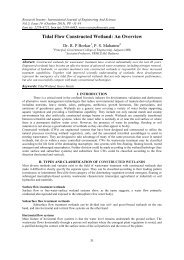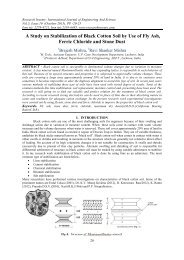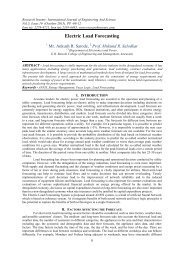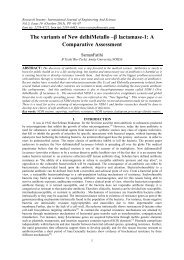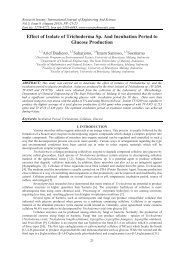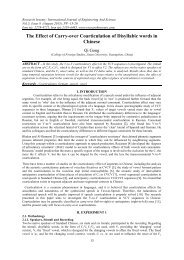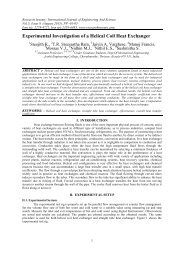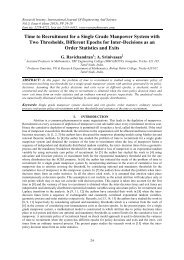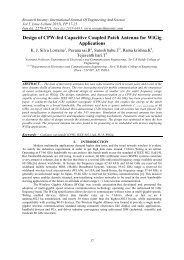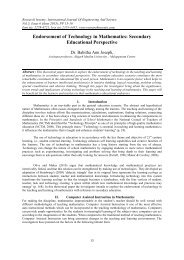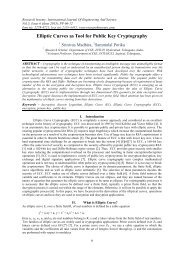Robot social design -Facial expressions
Research Inventy : International Journal of Engineering and Science is published by the group of young academic and industrial researchers with 12 Issues per year. It is an online as well as print version open access journal that provides rapid publication (monthly) of articles in all areas of the subject such as: civil, mechanical, chemical, electronic and computer engineering as well as production and information technology. The Journal welcomes the submission of manuscripts that meet the general criteria of significance and scientific excellence. Papers will be published by rapid process within 20 days after acceptance and peer review process takes only 7 days. All articles published in Research Inventy will be peer-reviewed.
Research Inventy : International Journal of Engineering and Science is published by the group of young academic and industrial researchers with 12 Issues per year. It is an online as well as print version open access journal that provides rapid publication (monthly) of articles in all areas of the subject such as: civil, mechanical, chemical, electronic and computer engineering as well as production and information technology. The Journal welcomes the submission of manuscripts that meet the general criteria of significance and scientific excellence. Papers will be published by rapid process within 20 days after acceptance and peer review process takes only 7 days. All articles published in Research Inventy will be peer-reviewed.
Create successful ePaper yourself
Turn your PDF publications into a flip-book with our unique Google optimized e-Paper software.
<strong>Robot</strong> <strong>social</strong> <strong>design</strong> -<strong>Facial</strong> <strong>expressions</strong>…<br />
Note: this formula is valid only if there are no redundant links, That is to say links physically appear in the<br />
mechanism but are not necessary for its movement.In order to use the criterion, we must eliminate redundant<br />
links and then calculate the degrees of freedom of the mechanism.<br />
All fixed parts (ground connections) are included as the first element. Although the degree of freedom of some<br />
unions is easy to visualize, at other times can be changed by equivalent systems [2].<br />
Eyes and eyelids<br />
III. ROBOT PARTS<br />
Ocular eyes have a degree of freedom for the axis of elevation and two for the orientation axis, the greater speed<br />
that can be achieved is similar to a human, which is 600 ° / s [4] [5].<br />
Mouth<br />
The human mouth is covered by the upper and lower lips and plays important roles in various activities such as<br />
language and facial <strong>expressions</strong> like smiling [4] [6]. Controlling the opening of the mouth keeps food and fluids<br />
within the oral cavity. The size and shape of the mouth are also critical in oral communication, contributing to<br />
the variety of vocal and consistent sounds [7]. The mouth is an organ used by humans to communicate large<br />
number of <strong>expressions</strong>, through this body can show happiness, sadness, fear, among other <strong>expressions</strong> [8].<br />
WE-4R<br />
IV. TWO SPECIAL ROBOTS<br />
In 2003, the robot WE-4R (Waseda Eyes # 4 Refined) that could express its emotions by using its facial<br />
<strong>expressions</strong>, torso and arms [9] was developed. In 2004, developed WE-4RII (Waseda Eyes # 4 Refined II) by<br />
integrating the robot anthropomorphic robot hand RCH-1, allowing him skills such as emotional expression, the<br />
ability to grasp and touch detection [9] [10].To see figure 1.<br />
KISMET<br />
Fig. 1. WE-4RII<br />
Kismet is a robot equipped to express feelings with 15 DOF (degrees of freedom) that thanks to its numerous<br />
joints. It can simulate a variety of human <strong>expressions</strong>. It is a development of MIT in the late 90s. These degrees<br />
of freedom allow you to simulate emotions such as anger, joy, sadness, worry, concern, disgust, surprise, among<br />
others [11] [12].To see figure 2.<br />
Fig. 2. Expressions generated by Kismet<br />
27



